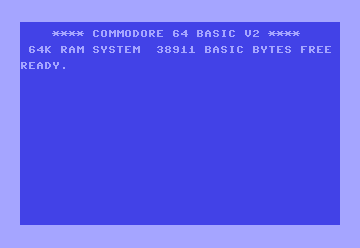
NEXT: Your Loop's Closing Act
Started a loop with FOR but don't know how to bring it to a close? Meet NEXT, the essential counterpart to the FOR command! This trusty tool marks the end of your loop and tells the Commodore 64 to jump back to the beginning, continuing the repetitive cycle until the loop's conditions are met. Think of it as the curtain call for your loop's performance!
Syntax
NEXT [<counter variable>]
Where:
- <counter variable>: (Optional) The same counter variable used in the corresponding FOR statement. If omitted, the NEXT statement will automatically apply to the most recently opened FOR loop.
Applications
The NEXT command is crucial for:
- Closing
FORloops: WithoutNEXT, your loops won't know when to stop repeating. - Nested loops: Use multiple
NEXTstatements to close multiple nestedFORloops, ensuring each loop completes its full cycle. - Creating structured code: Using
FORandNEXTtogether helps you write clean, organized loops that are easy to read and understand.
Code Examples
1. Simple FOR-NEXT Loop:
10 FOR I = 1 TO 5
20 PRINT I; :rem Output: 1 2 3 4 5
30 NEXT I :rem Close the FOR loop
This classic example counts from 1 to 5, printing each number on the screen. The NEXT I statement sends the program back to the beginning of the loop until the counter I reaches 5.
2. Nested Loops with NEXT:
10 FOR X = 1 TO 3
20 FOR Y = 1 TO 2
30 PRINT X; " * "; Y; " = "; X*Y
40 NEXT Y :rem Close the inner loop
50 NEXT X :rem Close the outer loop
This example demonstrates how multiple NEXT statements are used to close nested FOR loops, creating a simple multiplication table.
NEXT in the Wild: The Animation Director
Imagine you're creating a simple animation for your Commodore 64. You could use nested FOR loops to iterate over the screen's rows and columns, changing the color of each pixel in a sequence. The NEXT statements would ensure that each loop completes its full cycle, creating a smooth and continuous animation.
Don't leave your loops hanging! With NEXT, you can give them a proper ending, ensuring they repeat the desired number of times and contribute to well-structured code. It's a simple yet essential command that helps you harness the power of repetition in your Commodore 64 programs. So embrace the magic of NEXT and watch your loops come to life!
